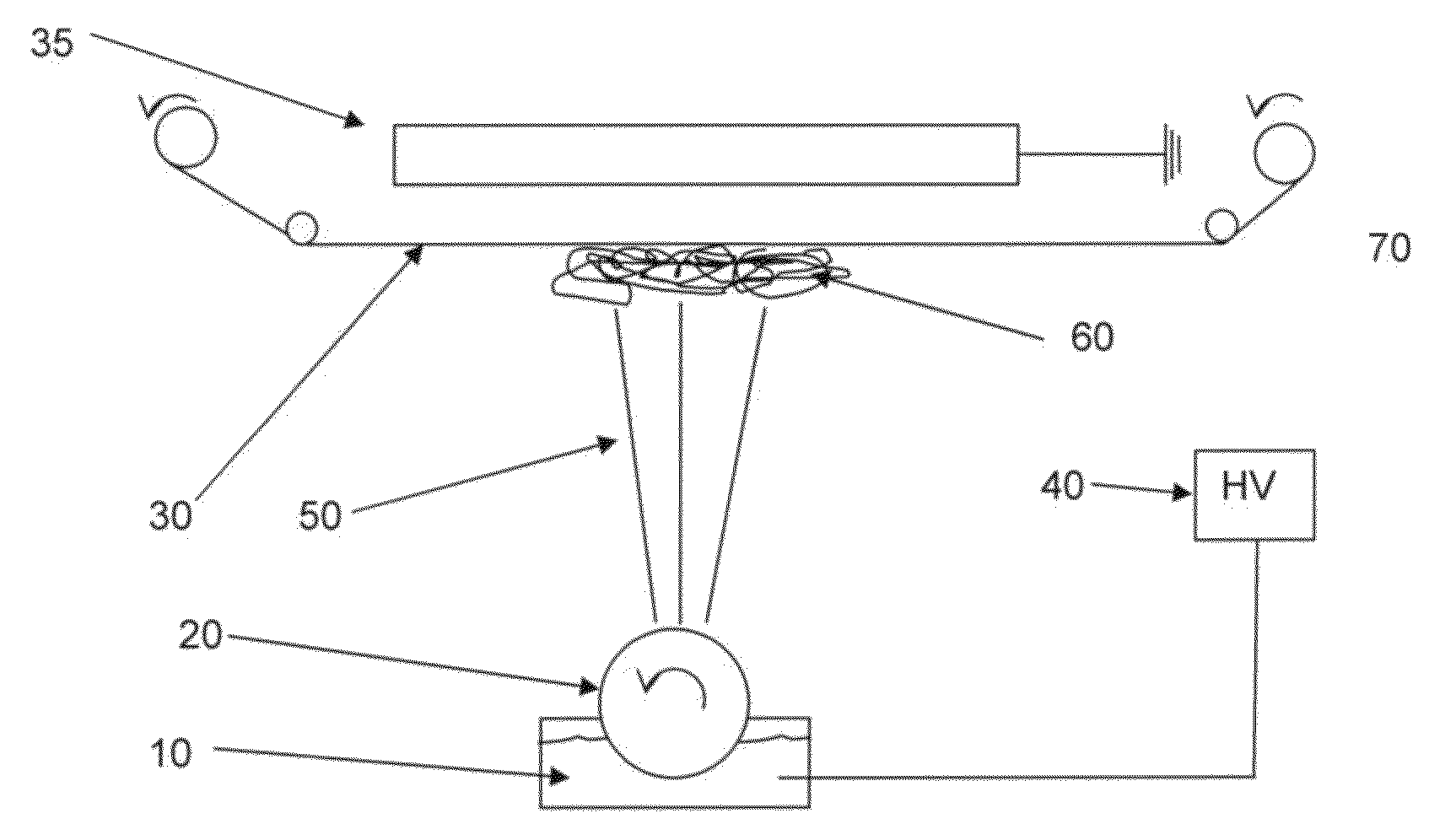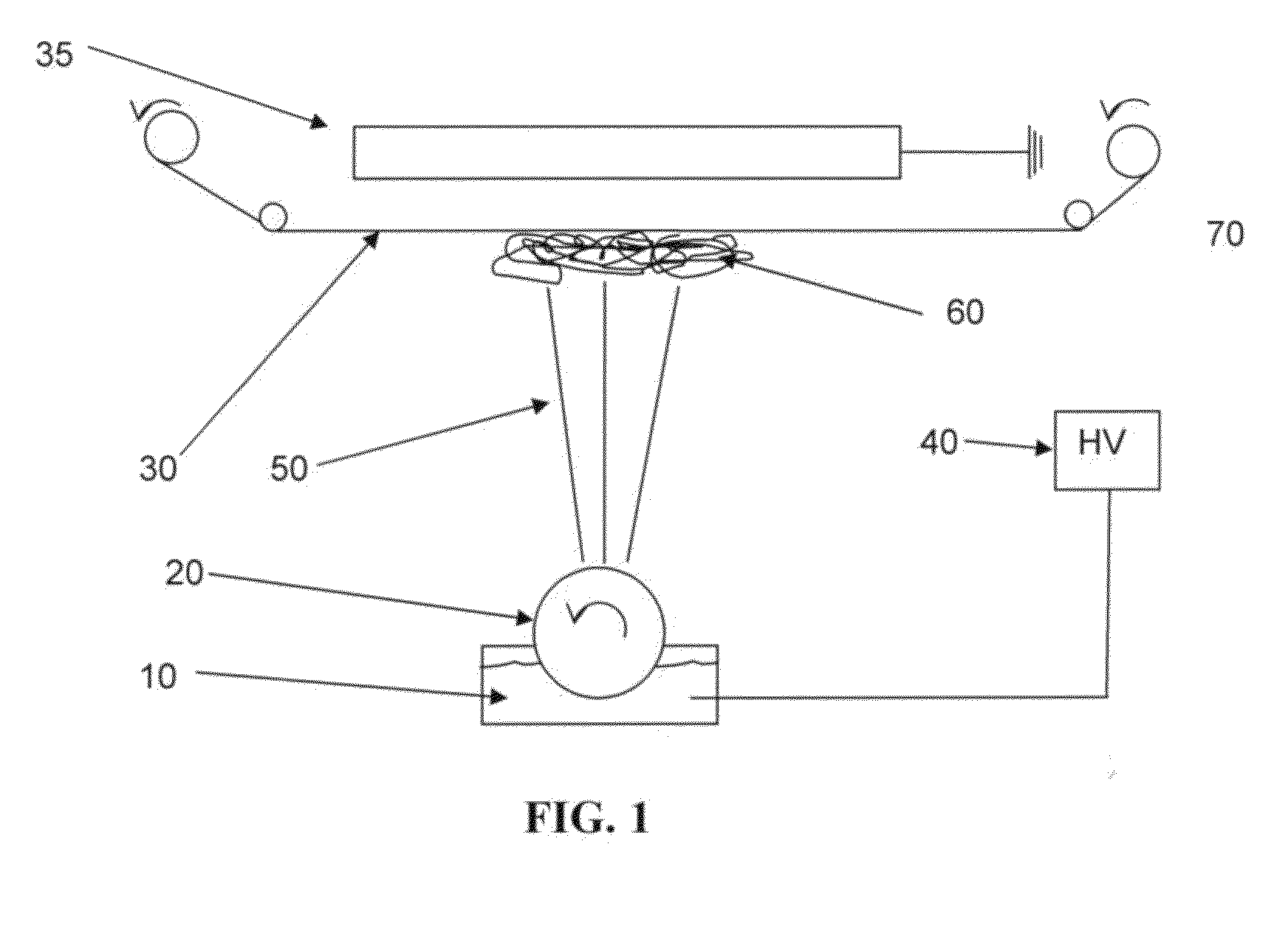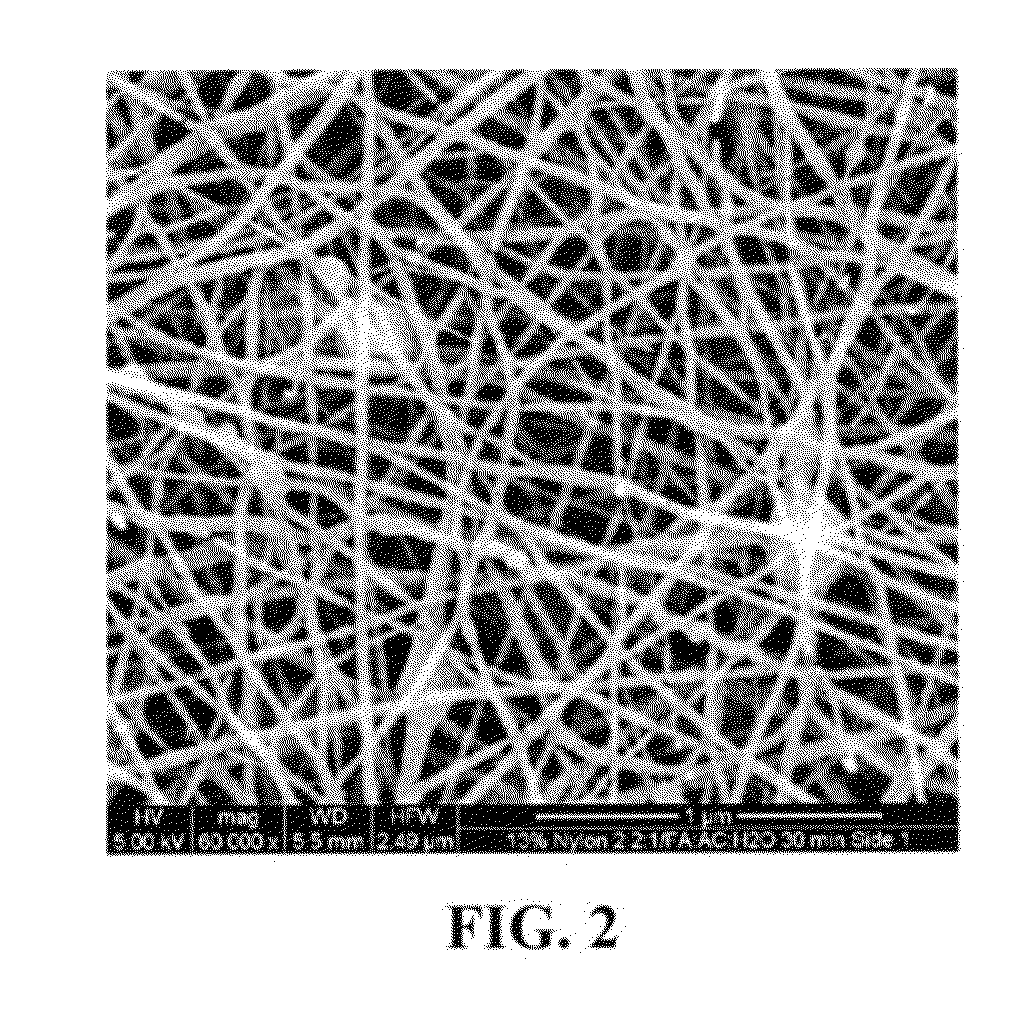Method for retrovirus removal
a retrovirus and liquid filtering technology, applied in the direction of membranes, filtration separation, separation processes, etc., can solve the problems of increasing the flux limitation of filtration of feed streams, reducing the porosity with the decrease of pore size, and manufacturers having to reduce their costs
- Summary
- Abstract
- Description
- Claims
- Application Information
AI Technical Summary
Benefits of technology
Problems solved by technology
Method used
Image
Examples
example 1
[0095]Nanofiber layers were made by electrospinning a solution of Nylon 6 polymer. Nylon 6 was supplied by BASF Corp. Florham Park, N.J., USA, under the trademark Ultramid 1324. The spinning solution was prepared as a 20% Nylon stock solution in a mixture Acetic and Formic acids (2:1 weight ratio) for 5 hours at 80° C. and the stock solution was further diluted into 13 wt. % polymer solution and solvent ratio 2:2:1 of Formic:Acetic:Water, respectively, with the necessary formic acid and water additions. The viscosity of the resulting solution is about 100 cP. The solution was immediately spun using a 6-wire spinning electrode under 82 kV electric field. An antistatically-coated non-woven material was used to support the nanofiber mat during electrospinning. The average fiber diameter of electrospun mat produced was about 25-30 nm. The spin time was 30 minutes, after which the nanofiber layer was peeled off the mat, layered and placed in overmolded devices for retention testing.
[0096...
example 2
[0099]The procedure in Example 1 was followed. The spin time was varied from 5 to 60 minutes (FIG. 5.). PR772 retention was tested for a single layer of each nanofiber mat. Bacteriophage PR772 retention of the electrospun nanofiber mats increased with increasing spin time (increasing mat thickness).
[0100]FIG. 5 is a graph of Log Reduction Value (LRV) of bacteriophage PR772 as a function of spin time of a nanofiber mat.
example 3
[0101]The procedure in Example 1 was followed, with solvent system for nylon being Formic acid / Water in weight ratio 4:1. The measured fiber diameter of produced electrospun mat was in the range of 25-30 nm, and the mean IPA bubble point in the range of 120-140 psi. 30 minute spin time samples were fully retrovirus retentive (LRV for bacteriophage PR772>6.2). FIG. 3 depicts a frontal scanning electron micrograph of the nylon fibers as exemplified in Example 3.
[0102]Method of Use
[0103]Electrospun nanofiber containing liquid filtration media, in accordance with the present invention are useful in the food, beverage, pharmaceuticals, biotechnology, microelectronics, chemical processing, water treatment, and other liquid treatment industries.
[0104]Electrospun nanofiber containing liquid filtration media, in accordance with the present invention may be used for filtering, separating, identifying, and / or detecting microorganisms from a liquid sample or stream.
[0105]Electrospun nanofiber c...
PUM
| Property | Measurement | Unit |
|---|---|---|
| Fraction | aaaaa | aaaaa |
| Fraction | aaaaa | aaaaa |
| Pore size | aaaaa | aaaaa |
Abstract
Description
Claims
Application Information
 Login to View More
Login to View More - R&D
- Intellectual Property
- Life Sciences
- Materials
- Tech Scout
- Unparalleled Data Quality
- Higher Quality Content
- 60% Fewer Hallucinations
Browse by: Latest US Patents, China's latest patents, Technical Efficacy Thesaurus, Application Domain, Technology Topic, Popular Technical Reports.
© 2025 PatSnap. All rights reserved.Legal|Privacy policy|Modern Slavery Act Transparency Statement|Sitemap|About US| Contact US: help@patsnap.com



